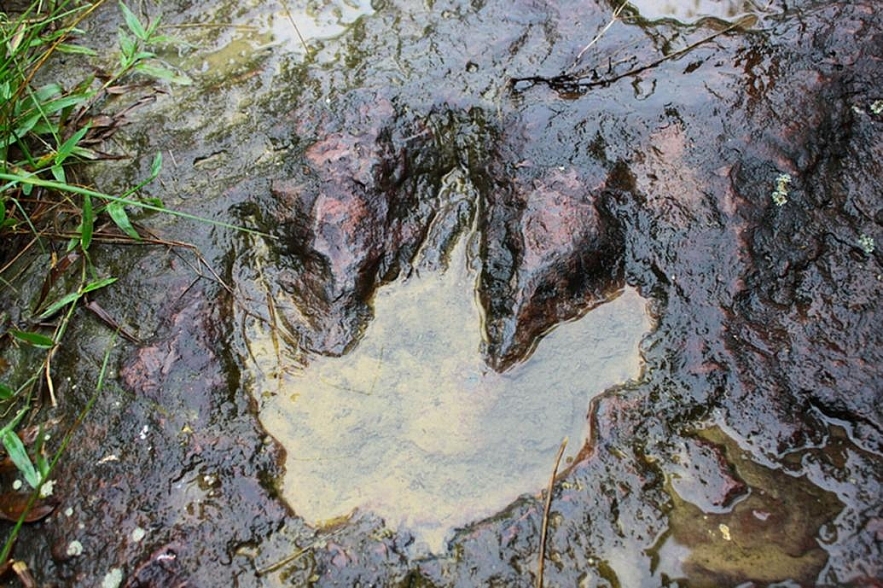20 Archaeological Discoveries - Incredible & Amazing of All Time
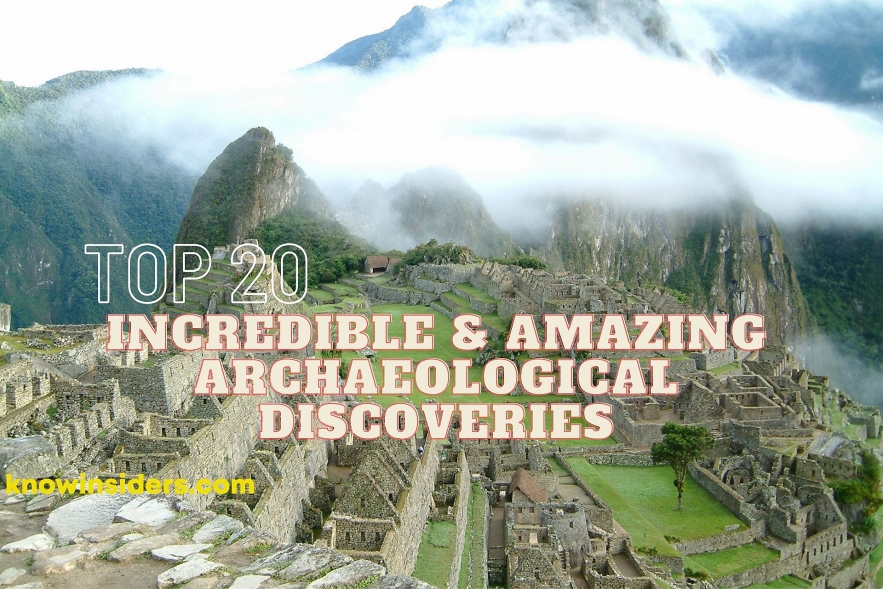 |
| Top 20 Incredible & Amazing Archaeological Discoveries of All Time |
We were reminded that a wealth of amazing, ancient information rests under our feet. In the last century, there have been famous archaeological discoveries that have changed our understanding of history and ourselves.
Here are the 20 most incredible archaeological findings of all time - and don’t be surprised if they inspire future travel plans, once it’s safe to explore the world again. The list includes important discoveries from around the world, ranging from the Americas to Asia, and even Antarctica.
Top 20 Archaeological Discoveries - Incredible & Amazing
1.Dig Uncovered 3,000-year-old lost pharaonic city in Egypt
Egyptian archeologists have unearthed a 3,000-year-old lost city, complete with mud brick houses, artifacts, and tools from pharaonic times.
Noted archeologist Zahi Hawass said Thursday (April 8, 2021) that an Egyptian mission had discovered the mortuary city in the southern province of Luxor. It dates back to what is considered a golden era of ancient Egypt, the period under King Amenhotep III of the 18th dynasty.
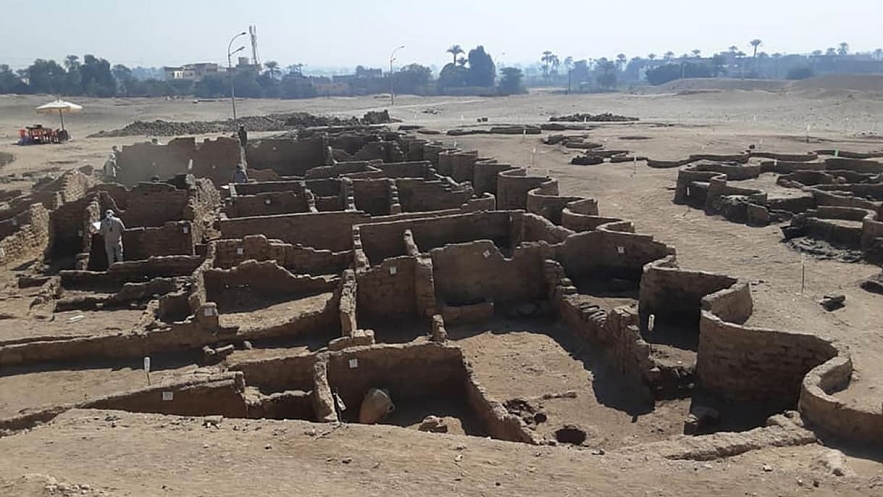 |
| 'Lost City' in Egypt: 3,000-Year-Old and Largest Ancient City, named "The Rise of Aten - Top 20 Archaeological Discoveries - Incredible & Amazing |
Last year, archeologists started excavating in the area searching for the mortuary temple of King Tutankhamun. However, within weeks, the statement said, archeologists found mud bricks formations that eventually turned out to be a well-preserved large city. City walls, and even rooms filled with utensils used in daily life are said to be present.
The newly unearthed city is located between the temple of King Rameses III and the colossi of Amenhotep III on the west bank of the Nile River in Luxor. The city continued to be used by Amenhotep III's grandson Tutankhamun, and then his successor king Ay.
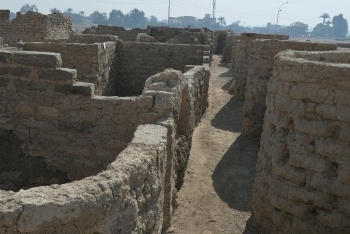 Fact About the 'Lost City' in Egypt: 3,000-Year-Old and Largest Ancient City, named The Rise of Aten Fact About the 'Lost City' in Egypt: 3,000-Year-Old and Largest Ancient City, named The Rise of Aten Agroup of archaeologists has found the largest ancient city ever discovered in Egypt, dating back 3,000 years. The city, named "The Rise of Aten," was ... |
2.King Tut's Tomb - Top 20 Archaeological Discoveries
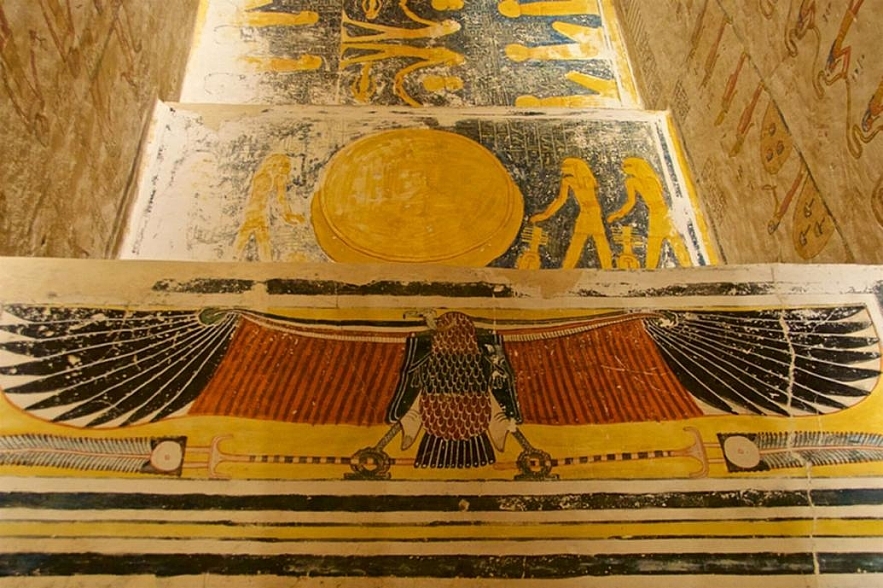 |
| The discovery of the pristine tomb of King Tutankhamun in 1922 made worldwide headlines and became an international fascination. English archaeologist Howard Carter spent six years searching for the rumored hidden tomb. One of the few not looted by grave robbers, the untouched tomb's thousands of objects and artwork gave researchers a window into ancient Egyptian funeral practices, including mummification and daily life in their society. (Dreamstime/TNS) |
 The boy king died in 1323 B.C. when he was about 18 years old. (Image credit: Merydolla / Shutterstock.com)
The boy king died in 1323 B.C. when he was about 18 years old. (Image credit: Merydolla / Shutterstock.com) Mystery and intrigue surround the next archaeological discovery on our list — that of the tomb of Tutankhamun, or King Tut. The Egyptian pharaoh's lavish burial chamber was discovered in 1922 by a team of archaeologists led by British Egyptologist Howard Carter.
Tutankhamun came to power around 1332 B.C. at age 9 and died about nine years later. His unexpected death may explain why the boy pharaoh's tomb appears to have been completed in a hurry. Microbes found on the wall of the tomb suggest that the paint on the walls wasn't even dry when the tomb was sealed, archaeologists say.
When Carter and his team entered King Tut's tomb for the first time, they were confronted with a variety of treasures, including two "ebony-black" effigies of the king and an array of gold-covered couches carved into the shapes of exotic animals. The treasures of the tomb were so incredible that Carter and his team helped protect them from grave robbers by perpetuating a myth that anyone who entered the tomb would suffer under the dead pharaoh's curse. But this alleged curse hasn't stopped archaeologists from continuing to explore the famous burial chamber nearly 100 years later.
3.Machu Picchu - Top 20 Archaeological Discoveries
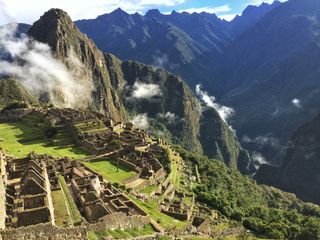 Machu Piccu in Peru. (Image credit: sharptoyou/Shutterstock.com)
Machu Piccu in Peru. (Image credit: sharptoyou/Shutterstock.com) One of the most popular archaeological sites on Earth, Machu Picchu is a 15th-century Inca site seated high on a mountainside in Peru. The late Hiram Bingham III, a professor at Yale University, rediscovered the site in 1911. Until then, the ancient ruins had gone under the radar of Spanish conquistadors and settlers, leaving them remarkably well preserved.
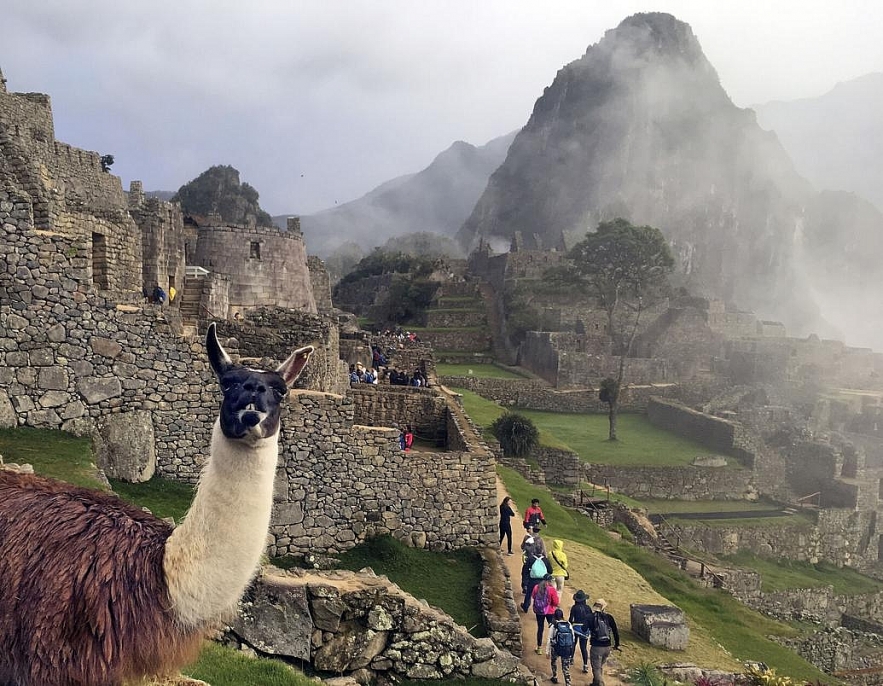 |
| Built around 1450, Peru's Machu Picchu was lost to the surrounding tropical forests until it was brought back to the attention of the outside world in 1911. This icon of Inca civilization is a testament to their social and religious organization, diet, immigration and trade patterns and their technological developments, such as terrace farming. (Chris Riemenschneider/Minneapolis Star Tribune/TNS) |
Many archaeologists believe that Machu Picchu was once the royal estate of Pachacuti Inca Yupanqui, a 14th-century Inca ruler. The large complex covers an area of about 126 square miles (326 square kilometers) and includes walls, terraces, houses and several temples.
4.Troy ancient city - Top 20 Archaeological Discoveries
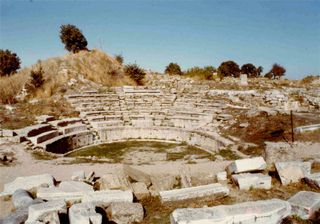 An amphitheater of Troy, the ancient city where archaeologists plan to dig beginning the summer of 2013. (Image credit: Brian Harrington Spier, Creative Commons.)
An amphitheater of Troy, the ancient city where archaeologists plan to dig beginning the summer of 2013. (Image credit: Brian Harrington Spier, Creative Commons.)
Few archaeological sites are as hotly debated as Troy, the ancient city where, according to Homer's "Illiad," the Trojan War between the kingdoms of Troy and Mycenaean Greece took place. Scholars disagree on whether this legendary war actually occurred and, if it did, if it took place at the site that many people now identify as the ancient city of Troy.
 |
| Immortalized in Homer's "Iliad," the ancient city of Troy is both a literary legend and real-life archaeological site located in modern-day Hisarlik, Turkey. Though it was long debated whether or not Troy was purely a work of fiction, both literary and historic descriptions of its location align with the city found at the present-day site, leading some to believe they're one and the same. Regardless, the area, which was first excavated in 1870 and is still being explored today, bears evidence to the evolution of Mediterranean civilization. (Manuel Cohen/Aurimages via ZUMA Press) |
The city is believed to have stood on a site known as Hisarlik on the northwest coast of Turkey. The notion that this particular site was once the city of Troy is rooted in thousands of years of history and mythology. But in the early 19th century, an archaeologist named Heinrich Schliemann popularized the idea worldwide after a series of excavations at Hisarlik unearthed treasures that Schliemann claimed belonged to King Priam, the ruler of Troy at the time of the Trojan War.
While archaeologists cannot be completely certain that Hisarlik is the Troy of legend, they do know that the site was inhabited for thousands of years (from 3,000 B.C. to A.D. 500). In fact, Hisarlik was the location of at least 13 different cities, each one built upon the ruins of the city that came before it.
5. Terracotta Army - Top 20 Archaeological Discoveries
Chinese farmers digging a well in 1974 struck one of the most iconic and important archaeological discoveries in the world. The Terracotta Army is a collection of thousands of soldier sculptures, along with horses, weapons and chariots, buried with Qin Shi Huang, the first Emperor of China, to protect him in the afterlife. Other figures found in the tomb include musicians, dancers and acrobats, all with different faces and expressions.
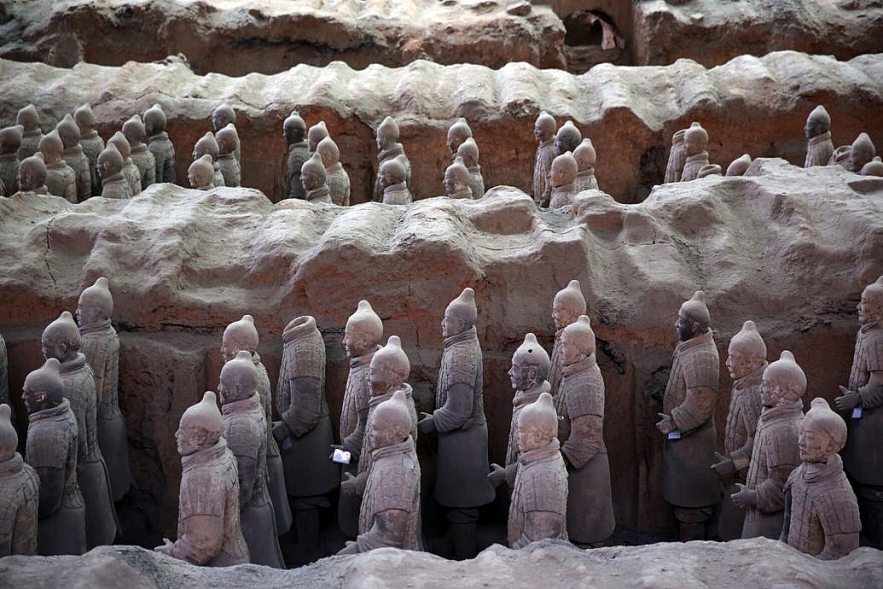 |
| Terracotta Army |
According to Smithsonian magazine, the thousands of figures and items in the underground pits are an imitation of the real organization within the Qin dynasty. The army's deterioration also points to the collapse of that dynasty not long after Qin's death.
Located underground near the city of Xi'an in China's Shaanxi province, this huge collection of ancient figures is situated less than a mile from the pyramid-shaped mausoleum of the first emperor. But the emperor's final resting place has never been excavated.
Archaeologists think that the opulent tomb is huge — a 38-square-mile (98 square kilometers) replica of the city of Xi'an, complete with a network of waterways and topographic features, like mountains and hills.
6. Pompeii - Top 20 Archaeological Finds
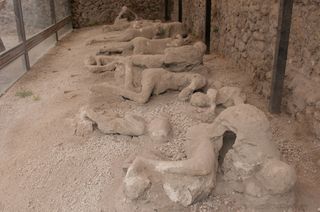 Bodies preserved in ash at Pompeii
Bodies preserved in ash at Pompeii When the Italian volcano Mount Vesuvius erupted in 79 A.D., the ash and magma spewed out buried the ancient Roman port city of Pompeii, entombing thousands of victims and the city's buildings until the site was rediscovered in 1748.
The remains of the city and its citizens were buried under a layer of pumice stone and ash some 19 to 23 feet (6 to 7 meters) deep.
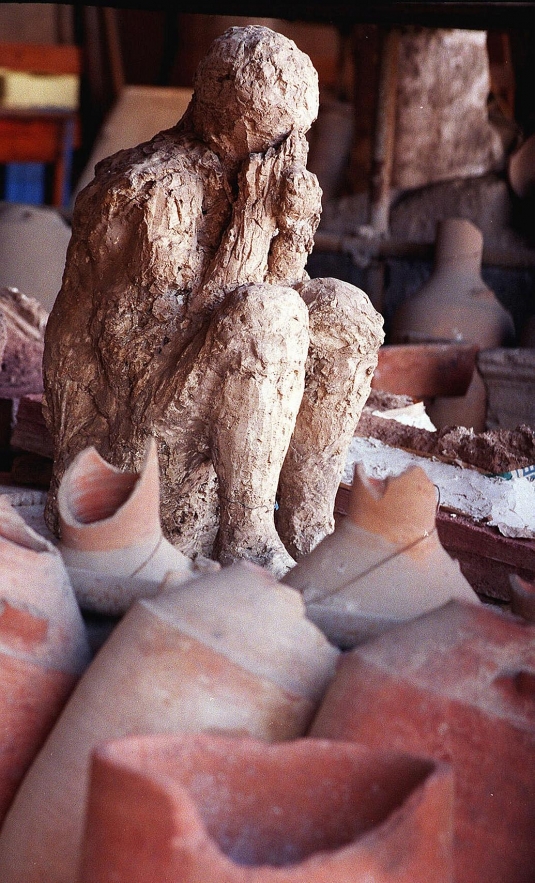 |
| When the ItaliWhen the Italian volcano Mount Vesuvius erupted in 79 A.D., the ash and magma spewed out buried the ancient Roman port city of Pompeii, entombing thousands of victims and the city's buildings until the site was rediscovered in 1748. |
Pompeii remained undisturbed for over a thousand years until, in the late 16th century, an architect named Domenico Fontana stumbled upon the ancient fresco-covered walls of a Pompeii residence while working on an infrastructure project. However, no further excavations were made at the site until the mid-18th century, when workmen digging a foundation for the summer palace of the King of Naples unearthed the remains of Herculaneum (a nearby town that had suffered the same fate as Pompeii). Pompeii itself was intentionally excavated not long thereafter. Centuries later, the city continues to be a popular attraction for tourists, and many artifacts from the site can be viewed at the Naples National Archaeological Museum.
7.Rosetta Stone - Top 20 Archaeological Finds
While it is now the name of a popular language learning software, the original Rosetta Stone was a stone slab found in 1799 that proved to be the key to deciphering Egyptian hieroglyphics.
The group of French soldiers rebuilding a military fort in the port city of el-Rashid (or Rosetta), Egypt, accidentally uncovered what was to become one of the most famous artifacts in the world — the Rosetta Stone. The ancient slab was carved in 196 B.C. and bears a royal decree issued by priests on behalf of Ptolemy V, then ruler of the Ptolemaic Empire in Egypt.
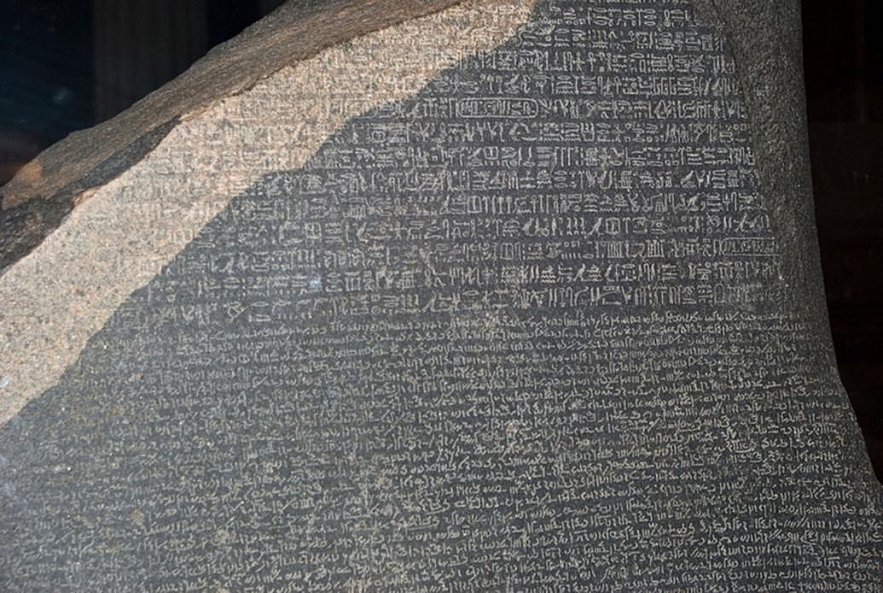 |
| Rosetta Stone |
The stone was inscribed with three versions of a decree issued 196 B.C.: one in hieroglyphic script, one in Egyptian Demotic script and one in Ancient Greek. It allowed researchers translate hieroglyphics for the first time to understand ancient Egyptian writings and culture.
The decree on the Rosetta stone is inscribed in three scripts: ancient Egyptian hieroglyphs, Egyptian demotic script and ancient Greek. In 1822, Egyptologist Jean-François Champollion deciphered the hieroglyphs on the stone, enabling future translations of other texts written in the ancient Egyptian language and reviving the lost history and culture of ancient Egypt.
8.The Library of Ashurbanipal - Top 20 Archaeological Finds
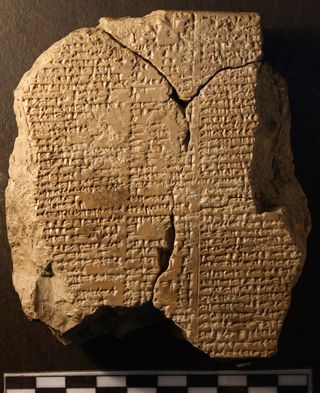 This clay tablet in inscribed with one part of the Epic of Gilgamesh. It was most likely stolen from a historical site before it was sold to a museum in Iraq. (Image credit: Farouk Al-Rawi)
This clay tablet in inscribed with one part of the Epic of Gilgamesh. It was most likely stolen from a historical site before it was sold to a museum in Iraq. (Image credit: Farouk Al-Rawi) Bookworms, get ready to swoon. In the 1850s, archaeologists in Kuyunjik, Iraq, uncovered a treasure trove of clay tablets inscribed with text from the seventh century B.C. The ancient "books" belonged to Ashurbanipal, who ruled the ancient kingdom of Assyria from 668 B.C. to around 630 B.C. Among the more than 30,000 pieces of writing were historical texts, administrative and legal documents, medical treatises, "magical" manuscripts and literary works.
The texts have "unparalleled importance" in the study of ancient cultures of the Near East, where many pieces from the Library of Ashurbanipal are currently housed.
9.Akrotiri, Ancient Buried City in Thera (Greek island)
The site of Akrotiri on the Greek island of Thera (now called Santorini) suffered a similar fate around 1500 B.C. The Bronze Age settlement was at the height of its development when an extremely powerful eruption of the Thera volcano covered all traces of the thriving metropolis in several meters of volcanic debris.
Some small-scale digging at Akrotiri first began in 1867, after locals discovered ancient artifacts at a quarry near the buried settlement. But a full excavation of the city wasn't carried out until 1967 under the direction of Greek archaeologist Spyridon Marinatos. He and his team uncovered a large and wealthy settlement, replete with private homes, paved streets, indoor toilets and richly painted frescoes.
 |
| Akrotiri, Ancient Buried City in Thera |
Visiting Akrotiri is a window into the life of a distant people – and a different side of Santorini. Akrotiri started life as a simple fishing and farming village, growing olives and grains. But because it was positioned on the trade route between Europe and the Middle East, the money flowed in and it grew up into a big, prosperous port city.Thedifference between Pompeii and the Akrotiri archaeological site is their age. Pompeii was founded in 600 BC and destroyed when Mount Vesuvius erupted in 79 AD, but Akrotiri makes it look young. It was home to the ancient Minoans over 4000 years before Pompeii was founded, and has been preserved just as it would have been in 1500 BC.
The Minoan people decorated Akrotiri with elaborate painted frescoes, made their own wine and crafted furniture, pots and sculptures. Amazing when you think this was during the Bronze Age, when people in Britain were still living in huts and building stone circles. It’s even said that Akrotiri was Plato’s inspiration for the city of Atlantis.
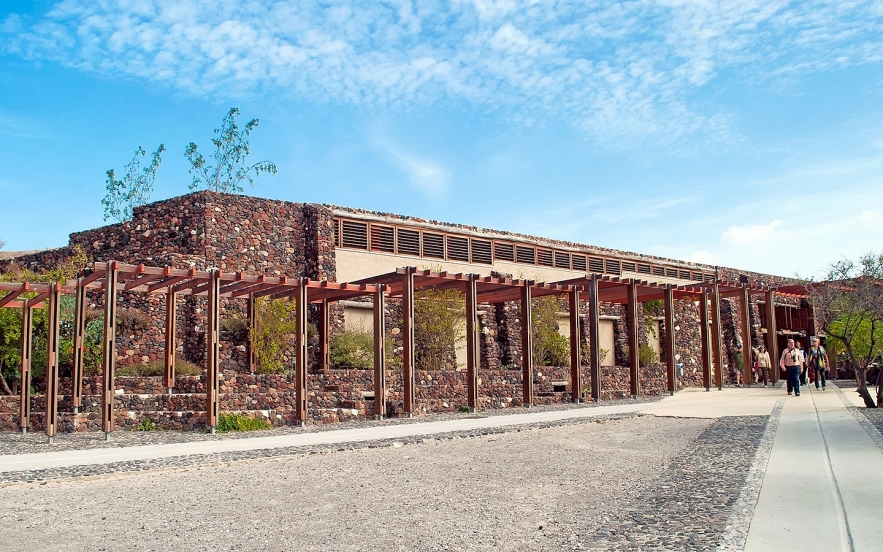 |
| The archaeological building at Akrotiri |
By the time the eruption had finished, Akrotiri had been buried beneath a 200-foot layer of ash and debris and the shape of Santorini had been changed for good. Covered with hot lava and piles of ash, the island was abandoned for centuries.But somewhere between 1620 and 1530 BC, it all went wrong for Akrotiri when the huge volcano Thera erupted and blew the centre right out of the island of Santorini. The eruption was one of the largest volcanic events ever recorded on Earth, creating a four-mile-wide caldera and sending up an ash cloud 20 miles high. It also set off a 100-metre-high tsunami that battered the coastline of Crete and reached as far as Egypt.
10. ‘Lost City’ of Etzanoa in south-central Kansas
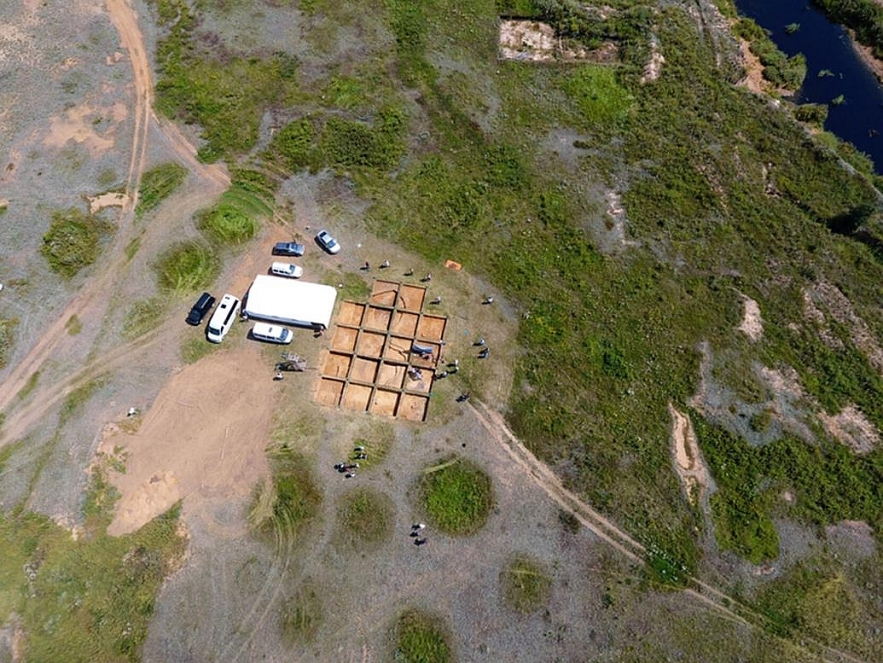 |
| In 2018, Donald Blakeslee, an anthropologist and archaeology professor at Wichita State University, located what he believes are the remains of the lost city of Etzanoa underneath Arkansas City, Kansas. He told the LA Times he suspects the city was home to up to 20,000 people for almost 200 years between 1450 and 1700. This urban hub would upend the traditional belief that Midwestern tribes were scattered nomads. This lost city in Kansas isn't the first time old remains have filled in gaps in American history. (Dreamstime/TNS) |
In June 2015, archaeologist Dr. Don Blakeslee led a wide-ranging field study in central and southern Kansas. One of his primary goals was to rediscover the long-lost Native American city of Etzanoa. He was successful.
The location, size and significance of Etzanoa — or the “Great Settlement,” as Spanish explorers labeled it after their 1601 expedition there — had become lost in the mists of time. For many decades, archaeologists debated these issues.
But in recent years, Blakeslee, a Wichita State University anthropology and archaeology professor, became convinced that the town inhabited by 20,000 ancestral Wichita Indians — the second-largest, or perhaps even the largest, settlement in North America in the early 1600s — was hidden in plain sight.
It was in the present location of Arkansas City, Kansas.
Voynich ManuscriptThe Voynich manuscript has eluded interpretation for a century. It was written in Central Europe in the 15th century and rediscovered by antique book dealer in 1912. Despite intense scrutiny, no one has been able to read the mysterious script. The Voynich manuscript has eluded interpretation for a century. It was written in Central Europe in the 15th century and rediscovered by antique book dealer in 1912. Despite intense scrutiny, no one has been able to read the mysterious script. (Image credit: Public domain) An antique dealer discovered the mysterious Voynich Manuscript in 1912 and immediately knew that he had stumbled upon something special — a book written in a language that no one can read. The 250-page book features a range of interesting images, from female nudes and Zodiac signs to drawings of medicinal plants. Researchers believe that the book is about 600 years old and hails from Central Europe. One researcher who has studied the Voynich manuscript extensively believes that it is most likely a treatise on nature, written in an unknown Near Eastern or Asian Language. However, there are some scholars who believe that the manuscript is simply an elaborate hoax that has kept people guessing since the Renaissance |
11. Olduvai Gorge in Tanzania
One of the most important archaeological sites in the world isn't a lost city or a treasure-filled tomb — it's a steep ravine in the Great Rift Valley in Tanzania. Known as Olduvai Gorge, the site holds the earliest evidence of the existence of human ancestors.
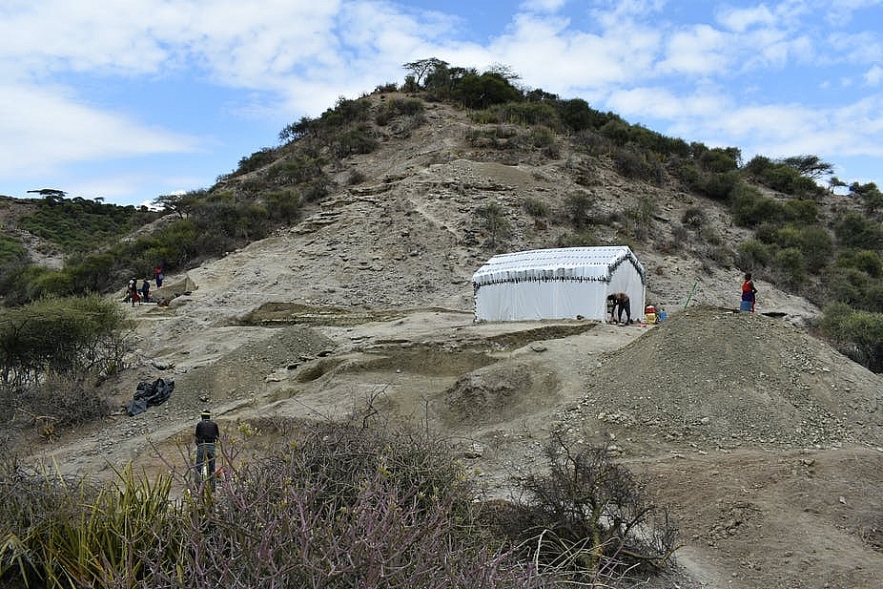 |
| Olduvai Gorge in Tanzania |
Taken together, the data we gathered presents the earliest evidence for human activity in the Olduvai Gorge: about 2 million years ago. It also shows that early humans used a great diversity of habitats as they adjusted to constant change, according to The Conversation (2021). Thanks to past and ongoing radiometric work – using the Argon method, which dates the deposition of volcanic materials that sandwich the archaeological finds – we were able to date these artefacts to a period known as the Early Pleistocene, 2 million years ago.
In the 1930s, a husband and wife team of paleoanthropologists (Louis and Mary Leakey) unearthed stone tools in Olduvai Gorge, as well as skull remains belonging to a 25-million-year-old Pronconsul primate. Then in 1959, Mary Leakey uncovered parts of a skull and upper teeth belonging to Paranthropus boisei, an early human ancestor, or hominin, which lived about 1.75 million years ago.
In 1968, Peter Nzube discovered a 1.8-million-year-old Homo habilis skull at the site. And in 1986, a team of archaeologists from Tanzania and the United States unearthed hundreds of bones belonging to a H. Habilis female who also lived some 1.8 million years ago. These and other findings at Olduvai Gorge helped to confirm that the first humans evolved in Africa.
12. Iceman mummy - ÖTZI

Ötzi the Iceman was discovered in 1991 by hikers in the Alps. (Image credit: Franco Rollo, University of Camerino.)
he Iceman mummy, nicknamed Ötzi, was discovered in 1991 amidst sheets of melting ice on the Tisenjoch pass of the Similaun glacier in the Tyrolean Alps. He was found on the border between Italy and Austria, at an altitude of 3,200 m above sea level. He is a well-preserved male human corpse, dark in color, and dates to the early Copper Age, indicating he is more than 5,000 years old (ca. 3,250 yrs. cal BCE). His belongings, scattered around the body, included a bow and quiver with arrows, a complete copper-bladed axe, a flint dagger with a wicker sheath, two birch wood vessels clad with maple leaves, remnants of a backpack, a leather pouch with small objects, fur and leather garments, shoes, and other minor artifacts.
When scientists realized the antiquity of the find, the media response was overwhelming and Ötzi captivated audiences far and wide.
After thousands of samplings and high-tech analytical tests, Ötzi is the most intensively studied mummy in the history of archaeology.
Almost universal agreement indicates that the mummy is not an artifact of human action, like Egyptian Dynastic mummies. The incredible preservation of Ötzi’s body has been and remains a crucial point since its discovery. The mummy is much better preserved than more recent bodies found in similar glaciers, underscoring its importance. Analysis of skin and underlying tissues revealed that Ötzi underwent rapid desiccation while exposed to circulating air, being encapsulated in ice only at a later time. Aeolian desiccation may be due to natural or intentional processes.
Material evidence is compatible with alternative theories: natural desiccation at the findspot (“disaster theory”) or a sort of funerary treatment followed by burial at high altitude (“social theory”). Today, at Bozen, the body of Ötzi is visible through the glass of a special freezing chamber.
13. Rapa Nui or Easter Island
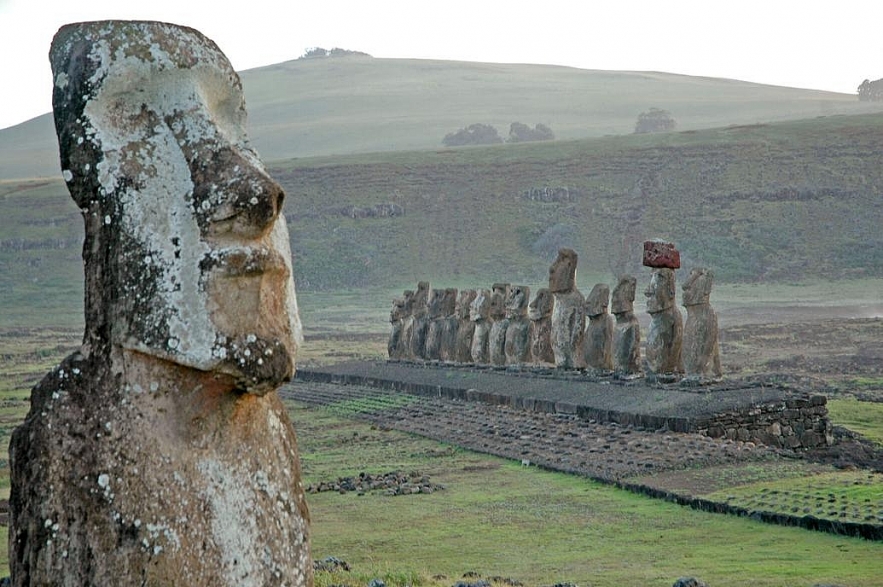 |
| Easter Island is one of the most remote islands in the world, and its almost 900 monumental statues, called moai, made by the Rapa Nui people, have captivated the imagination of outsiders. They average 13 feet tall and weigh 14 tons. Though it's generally accepted they were built to honor ancestors and former chiefs, the real mystery was how an isolated, small and seemingly primitive people moved these massive blocks miles from a quarry to their locations across the island. Studying the island r |
Rapa Nui is located in the Pacific Ocean, on latitude -27.15 and longitude -109.4, 3600 km west of Chile in South America . Flying from Chile's capital Santiago, which is the closest flight connection, takes around 5 hours.Rapa Nui, or Easter Island, is best known as the home of approximately 1,000 giant "head" statues, or moai. There are an estimated 900 moai on Rapa Nui, which were carved and erected sometime between the 11th and 17th centuries A.D., according to UNESCO. The figures, which consist of oversized heads atop long torsos, range in height from 6 feet (2 meters) to over 30 feet (9 m), though one unfinished moai on the island is over 65 feet (20 m) tall.
The Rapa Nui people are polynesians, such as Hawaiians, Tahitians and the Maori of New Zealand. The native languages of these islands are very similar.
Music, dance and art has always been a central part of Rapa Nui culture. The island is today part of Chile, and strong South American influences threaten the existence of the fragile Rapa Nui culture which a mere 3000 people are part of.
As tourism became a more common part of the Easter Island society since the 1990's and people travel from all over the world to see this unique culture, there has been an increased pride in the cultural Rapa Nui identity. Today, most newborns that are Rapa Nui are given Rapa Nui names, and parents try to speak the native language to their children as much as possible. During the 1980's and before, most babies were given Spanish names, and parents often did an effort to teach their children Spanish, even if this was their weaker language.
14.Provincial pyramids of Egypt
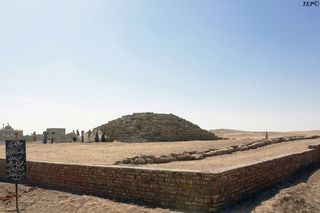 In order to protect the pyramid a fence was built surrounding it. (Image credit: Courtesy Tell Edfu Project at the University of Chicago’s Oriental Institute.)
In order to protect the pyramid a fence was built surrounding it. (Image credit: Courtesy Tell Edfu Project at the University of Chicago’s Oriental Institute.) You've heard of the Great Pyramid of Giza, but what about the step pyramid of Edfu? This ancient structure is about 4,600 years old, making it at least a few decades older than the famous pyramid at Giza.
The once 43-foot-tall (13 meters) step pyramid is one of seven "provincial" pyramids constructed by either pharaoh Huni or Snefru sometime between 2635 and 2590 B.C. These early pyramids are found throughout central and southern Egypt near what were once major settlements. Unlike the pyramids at Giza, the step pyramids do not contain internal chambers and weren't used for burial. In fact, researchers aren't sure what their primary purpose was.
Scholars knew about the pyramid at Edfu long before it was first excavated in 2010. However, recent efforts by archaeologists from the University of Chicago are the first to explore in-depth the reasons for the pyramid's construction and subsequent abandonment not long thereafter.
15. Mesa Verde Cliff Palace
Mesa Verde Cliff Palace, the largest and most famous cliff dwelling in Mesa Verde National Park, has over 150 individual rooms and more than 20 kivas (rooms for religious rituals). Crafted of sandstone, wooden beams and mortar, Mesa Verde Cliff Palace has been remarkably well preserved from the elements for the past 700 years.
The rock you see is Cliffhouse sandstone, geologically deposited during the Cretaceous Period some 78 million years ago. Since sandstone is a very porous material, moisture seeps right down through it. Beneath the layer of sandstone, however, is a layer of shale through which the moisture cannot penetrate. In the winter months, when the moisture freezes and expands, chunks of sandstone are cracked and loosened. Later these pieces collapse, forming alcoves such as the one here.
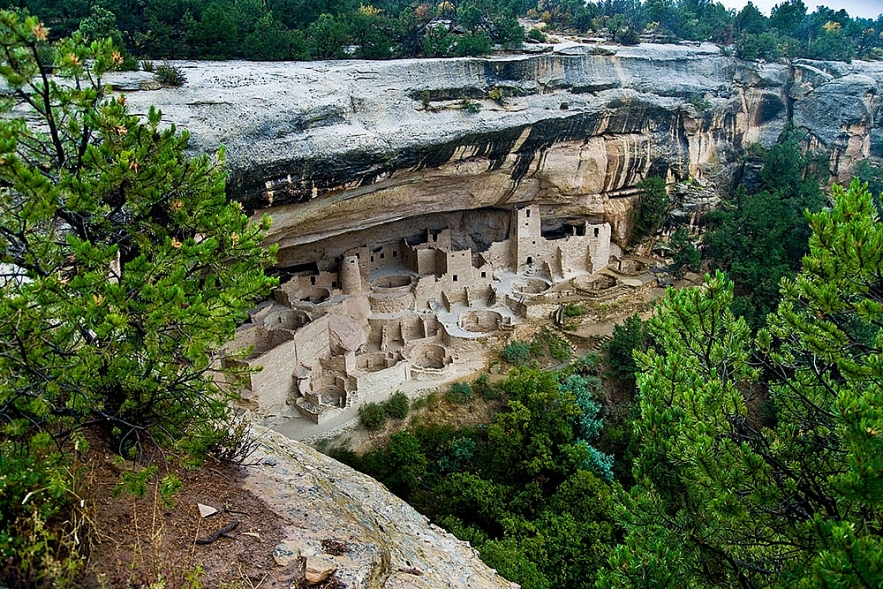 |
| Mesa Verde Cliff Palace |
The majority of alcoves within Mesa Verde National Park are small crevices or ledges able to accommodate only a few small rooms. Very few are large enough to house a dwelling the size of Mesa Verde Cliff Palace. Recent studies reveal that Mesa Verde Cliff Palace contained 150 rooms and 23 kivas and had a population of approximately 100 people. Out of the nearly 600 cliff dwellings concentrated within the boundaries of the park, 75% contain only 1-5 rooms each, and many are single room storage units. When you visit Mesa Verde Cliff Palace you will enter an exceptionally large dwelling, which may have had special significance to the original occupants. It is thought that Mesa Verde Cliff Palace was a social, administrative site with high ceremonial usage.
16. Newgrange in Ireland
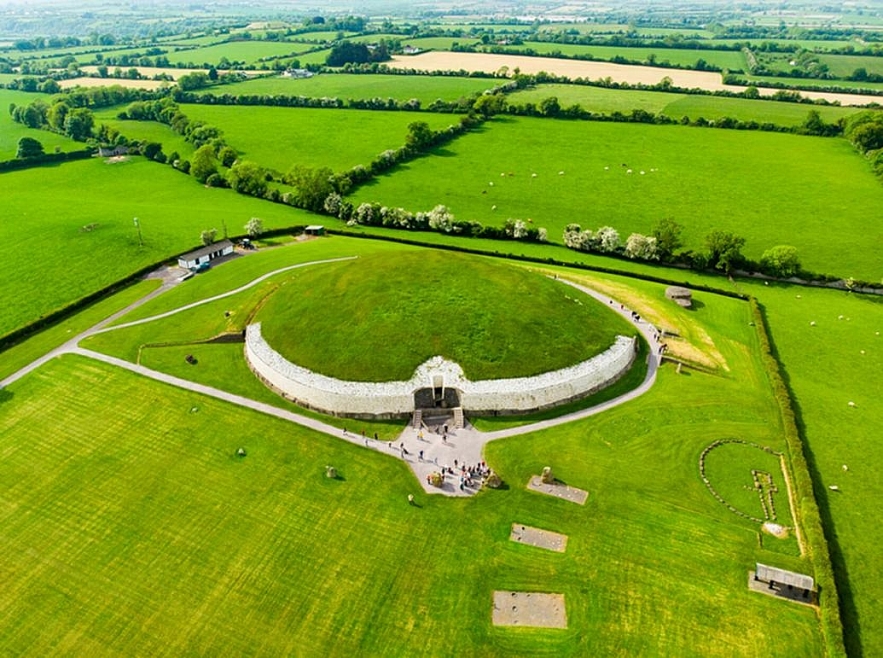 |
| Older than both Stonehenge and the Egyptian pyramids, the prehistoric monument of Newgrange in Ireland was built around 3200 B.C. Since 1890, it has been conserved and has been the site of archaeological excavations that revealed its function and how it had been built. The site provides insight into ancient art, technology and religion, including the importance of the winter solstice. On that day each year, a small opening calibrated to the location of the sun allows light to stream inside the c |
Newgrange is a 5,200 year old passage tomb located in the Boyne Valley in Ireland's Ancient East.
Newgrange was built by Stone Age farmers, the mound is 85m (279ft) in diameter and 13m (43ft) high, an area of about 1 acre.
A passage measuring 19m (62ft) leads into a chamber with 3 alcoves. The passage and chamber are aligned with the rising sun on the mornings around the Winter Solstice.
Newgrange is surrounded by 97 large stones called kerbstones some of which are engraved with megalithic art; the most striking is the entrance stone.
Access to the Newgrange monument is via the Brú na Bóinne Visitors Centre.
Newgrange is a Stone Age (Neolithic) monument in the Boyne Valley, County Meath, it is the jewel in the crown of Ireland's Ancient East. Newgrange was constructed about 5,200 years ago (3,200 B.C.) which makes it older than Stonehenge and the Great Pyramids of Giza. Newgrange is a large circular mound 85m (279ft) in diameter and 13m (43ft) high with a 19m (63ft) stone passageway and chambers inside. The mound is ringed by 97 large kerbstones, some of which are engraved with symbols called megalithic art.
Newgrange was built by a farming community that prospered on the rich lands of the Boyne Valley. Knowth and Dowth are similar mounds that together with Newgrange have been designated a World Heritage Site by UNESCO.
Archaeologists classified Newgrange as a passage tomb, however Newgrange is now recognised to be much more than a passage tomb. Ancient Temple is a more fitting classification, a place of astrological, spiritual, religious and ceremonial importance, much as present day cathedrals are places of prestige and worship where dignitaries may be laid to rest.
Newgrange is a large kidney shaped mound covering an area of over one acre, retained at the base by 97 kerbstones, some of which are richly decorated with megalithic art. The 19m long inner passage leads to a cruciform chamber with a corbelled roof. The amount of time and labour invested in construction of Newgrange suggests a well-organized society with specialised groups responsible for different aspects of construction.
Newgrange is part of a complex of monuments built along a bend of the River Boyne known collectively as Brú na Bóinne. The other two principal monuments are Knowth (the largest) and Dowth, but throughout the area there are as many as 35 smaller mounds.
17. Gobekli Tepe

Located in southern Turkey, near the modern-day city of Urfa, Göbekli Tepe is an archaeological site that dates back more than 11,000 years. Only a small portion of the site has been excavated since its discovery in 1963, but researchers believe that the structures found there may have been part of a prehistoric temple — perhaps the first temple ever constructed.
Göbekli Tepe's standout features are its T-shaped limestone blocks, which line the site's stone rings. The rings were built so that each was inside of the other and the largest has a diameter of 100 feet (30 m). Before building a new ring inside of a larger ring, ancient people would line the outer ring with the T-shaped blocks and then fill the outer ring with debris. The blocks were also carved with images of people and animals. While researchers aren't sure exactly what purpose all of these rings and blocks served, some suspect that the site attracted people from all over the Near East and served as a place of pilgrimage.
18. Dead Sea Scrolls
The Dead Sea Scrolls are ancient manuscripts that were discovered between 1947 and 1956 in eleven caves near Khirbet Qumran, on the northwestern shores of the Dead Sea.
They are approximately two thousand years old, dating from the third century BCE to the first century CE. Most of the scrolls were written in Hebrew, with a smaller number in Aramaic or Greek. Most of them were written on parchment, with the exception of a few written on papyrus. The vast majority of the scrolls survived as fragments - only a handful were found intact. Nevertheless, scholars have managed to reconstruct from these fragments approximately 950 different manuscripts of various lengths.
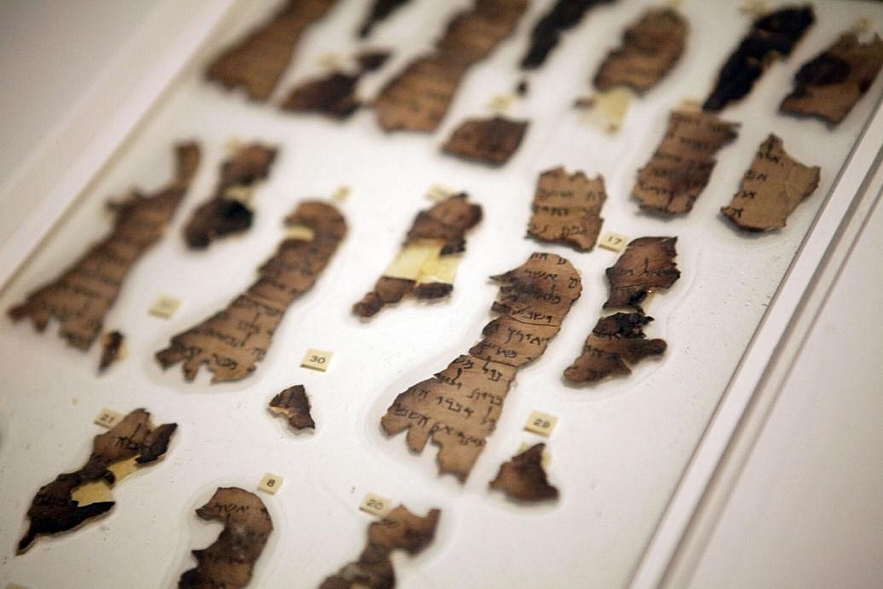 |
| The Dead Sea Scrolls are a series of hundreds of ancient religious scrolls discovered along the coast of the Dead Sea between 1947 and 1956. Described as the greatest manuscript discovery of modern times, the scrolls contain books of what Christianity refers to as the Old Testament as well as prophecies, psalms and religious writings not contained in the modern Bible. The scrolls were written in Hebrew, Greek and Aramaic, which expanded scholars’ understanding of the latter ancient language. |
The discovery of the Dead Sea Scrolls represents a turning point in the study of the history of the Jewish people in ancient times, for never before has a literary treasure of such magnitude come to light. Thanks to these remarkable finds, our knowledge of Jewish society in the Land of Israel during the Hellenistic and Roman periods as well as the origins of rabbinical Judaism and early Christianity has been greatly enriched.The manuscripts fall into three major categories: biblical, apocryphal, and sectarian.
The biblical manuscripts comprise some two hundred copies of books of the Hebrew Bible, representing the earliest evidence for the biblical text in the world. Among the apocryphal manuscripts (works that were not included in the Jewish biblical canon) are works that had previously been known only in translation, or that had not been known at all. The sectarian manuscripts reflect a wide variety of literary genres: biblical commentary, religious-legal writings, liturgical texts, and apocalyptic compositions. Most scholars believe that the scrolls formed the library of the sect that lived at Qumran. However it appears that the members of this sect wrote only part of the scrolls themselves, the remainder having been composed or copied elsewhere.
19. Palace of Knossos, Crete
 The queen's megaron at the Palace of Knossos features a reconstructed fresco depicting blue dolphins swimming above a doorway.
The queen's megaron at the Palace of Knossos features a reconstructed fresco depicting blue dolphins swimming above a doorway. Located on the Greek island of Crete, the Palace of Knossos is a Bronze Age structure built by the Minoan civilization around 1950 B.C. The palace complex covers about 150,000 square feet (14,000 square meters) and, in ancient times, was surrounded by a sizeable town.
The Palace of Knossos became a well-known archaeological site in the early 20th century, when British archaeologist Arthur Evans led a team of researchers in the excavation and restoration of the ancient site (though the first excavations at Knossos were conducted in 1878 by an archaeologist from Crete). Evans and his team discovered that the first palace built on the site had been severely damaged and that another palace was built on top of it around 1700 B.C., according to the Heraklion Archaeological Museum. The second palace stood until around 1450 B.C., when some kind of catastrophe (either a natural disaster or an enemy invasion) destroyed not only Knossos, but also other sites across Crete.
Knossos is perhaps best known for its colorful frescoes, many of which depict mythological creatures, marine wildlife and ceremonial scenes. The site also yielded many diverse examples of Minoan pottery, many of which are displayed at the nearby Heraklion Archaeological Museum.
20. Antikythera Mechcanism

A computer-generated reconstruction of the front and back of the Antikythera Mechanism. (Image credit: Antikythera Mechanism Research Project)
In 1900, a group of sponge divers in the Mediterranean Sea came across a 2,000-year-old shipwreck off the Greek island of Antikythera. The divers hauled many artifacts from the wreck, including three flat pieces of corroded bronze that are now known as the Antikythera Mechanism.
The rusty old device sat in storage at the National Archaeology Museum, Athens, until the 1950s, when Derek J. de Solla Price, a science historian from Yale University, took interest in the find. Price described the mechanism as an "ancient Greek computer," and other researchers have referred to the Antikythera Mechanism as an astronomical calculator. It's about the size of a shoebox and contains an intricate system of gears and a crank on the outside that controls the gears. The two faces of the device contain a series of dials, which researchers believe corresponded to a display of the sun, moon and planets.
While the ancient Greeks could have used the device to track the position of the sun, the phases of the moon and even the cycles of Greek athletic competitions, researchers aren't sure why ancient people would have needed such a complicated device to track those cycles. Recently, researchers have suggested that the Antikythera Mechanism was used as an instructional device — more of a novelty than a necessity.
Bonus: Golden age of archaeologyWith the vast increase in technology as well as the scientific exploration of previously remote or closed off areas of the world, the modern era is becoming the golden age for archaeological discoveries.
For example, according to National Geographic, today paleontologists are discovering 50 new species of dinosaurs a year, which is roughly a new species every week. This means we have even more amazing discoveries to come. |

